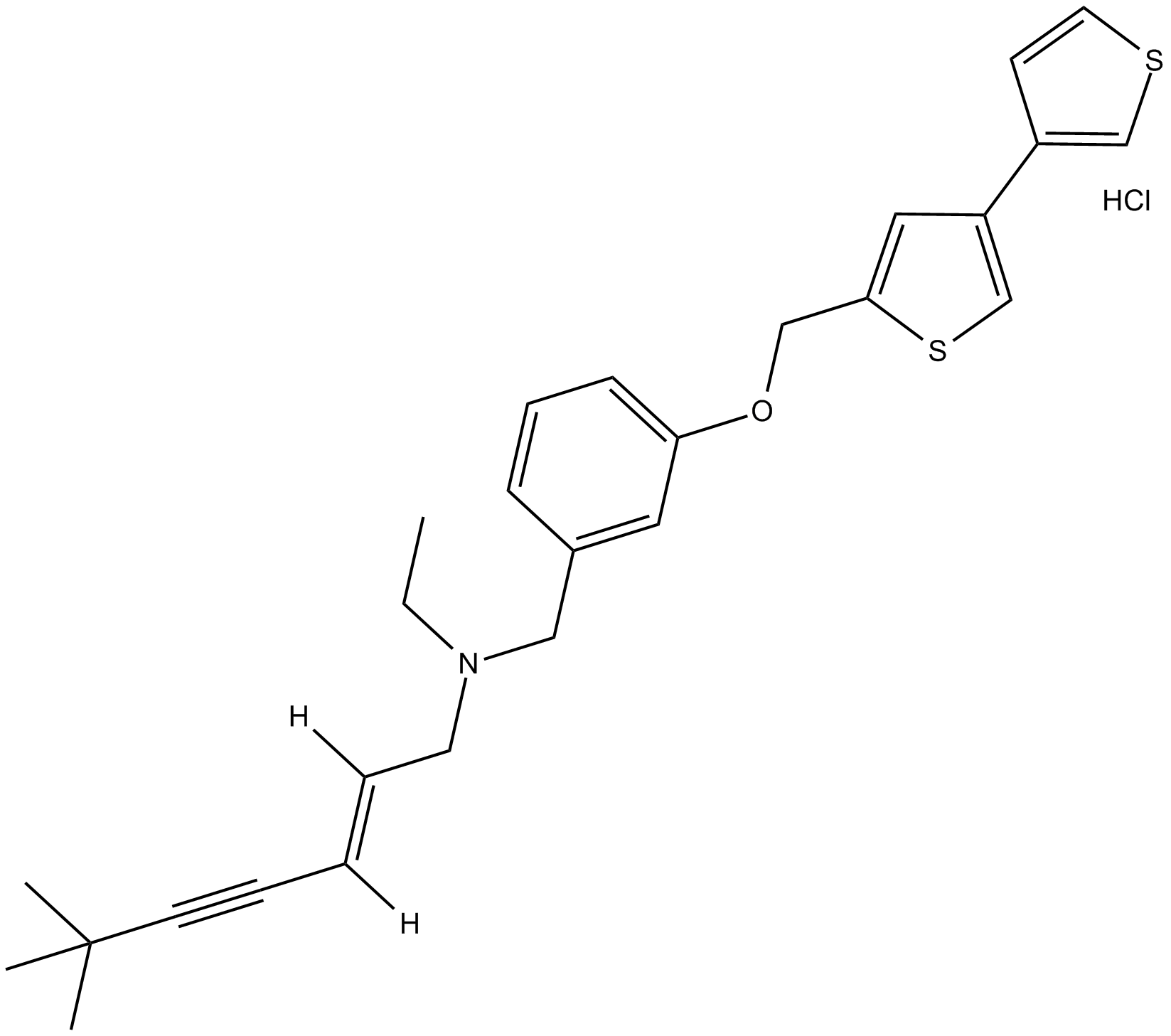NB-598 hydrochloride (Synonyms: NB 598 hydrochloride;NB598 hydrochloride) |
| Catalog No.GC15686 |
Products are for research use only. Not for human use. We do not sell to patients.

Cas No.: 136719-25-0
Sample solution is provided at 25 µL, 10mM.
NB-598 is a competitive inhibitor of squalene epoxidase with IC50 value of 4.4 nM [1].
Low-density lipoprotein (LDL) is a lipoprotein that transfers cholesterol from the liver to all tissues of the body. Increasing concentrations of LDL particles are strongly associated with increasing amounts of atherosclerosis. Therefore the inhibition of cholesterol synthesis is thought to have hypolipidemic effect. In the complex process of cholesterol synthesis, squalene epoxidase is located in the middle of the pathway and plays an important regulatory role. It is a good target for hypocholesterolemic drugs discovered. As an inhibitor of squalene epoxidase, NB-598 was a benzylamine derivative that screened out from synthetic compounds. It competitively inhibited squalene epoxidase with respect to squalene. The Ki value for it was 0.68 nM. NB-598 inhibited cholesterol synthesis both in vitro and in vivo [1].
NB-598 is a selective inhibitor of squalene epoxidase. It had no inhibition on 2, 3-oxido-squalene cyclase. Unlike those compounds used as antifungal drugs, NB-598 showed no inhibitory effect against Trichophyton mentagrophytes or Candida albicans. In the in vitro assay using microsomes from HepG2 cells, NB-598 inhibited squalene epoxidase with IC50 value of 0.75 nM. In HepG2 cells, NB-598 prevented cells from incorporating acetate into cholesterol with IC50 value of 3.4 nM. It did not affect the synthesis of other lipids such as free fatty acid, triacylglycerol and phospholipids [1].
In rats, oral administration of NB-598 dose-dependently increased serum squalene levels and decreased serum cholesterol levels with ED50 value of 5.1 mg/kg. In beagle dogs, oral administration of NB-598 at dose of 10 mg/kg/day for 28 days significantly lowered cholesterol levels in serum. Besides that, it caused reduction of all classes of lipoprotein cholesterol. It was found that NB-598 reduced LDL cholesterol levels through inducing the activities of LDL receptors [1].
Reference:
[1] Horie M, Tsuchiya Y, Hayashi M, et al. NB-598: a potent competitive inhibitor of squalene epoxidase. Journal of Biological Chemistry, 1990, 265(30): 18075-18078.
Average Rating: 5 (Based on Reviews and 30 reference(s) in Google Scholar.)
GLPBIO products are for RESEARCH USE ONLY. Please make sure your review or question is research based.
Required fields are marked with *




















